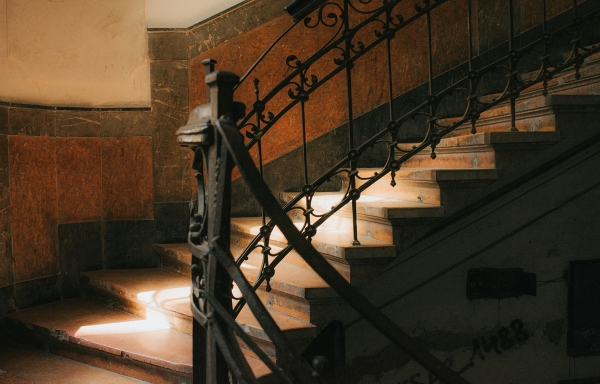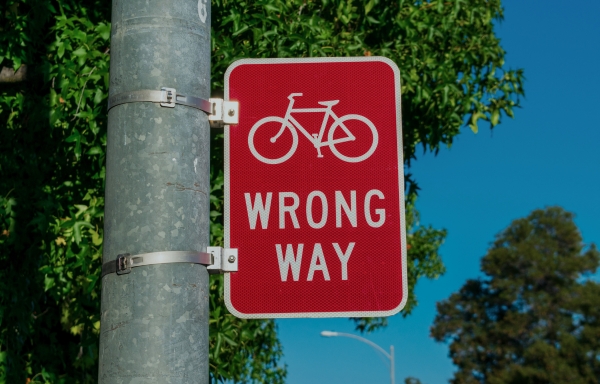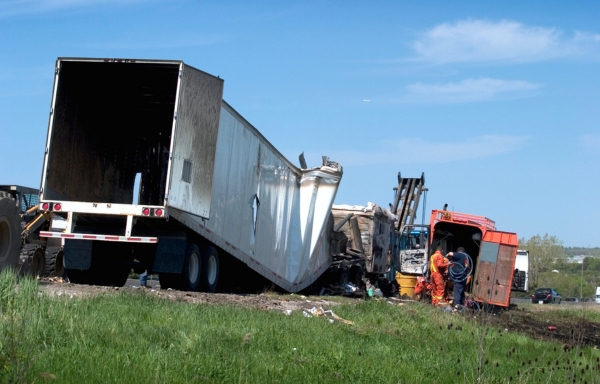Restaurant Patron Slips on Dimly Lit Staircase

Case Summary: After a dinner at a restaurant establishment (Defendant), Plaintiff was injured descending interior stairs to the exit. The staircase was dimly lit and did not conform with established standards and codes. Plaintiff’s shoe slipped off a severely worn stair nosing, which caused him to fall and sustain a severe personal injury.
Expert Analysis: An analysis was performed based on a site survey of the incident stairway. Illumination measurements were taken, along with measurements of the stair’s tread risers, tread depths, and nosing radii. A comparison of these measurements with industry accepted standards and codes showed that the stairway was inadequately illuminated. This contributed to a stair user misjudging suitable placement of his feet as he attempted to descend.
The International Building Code required means of egress illumination to be not less than 1 footcandle. The analysis concluded that the industry recommended illumination for a 25-year-old to safely use the staircase was not less than 2.5 footcandles – compared to the 0 footcandles measured during the site inspection. Plaintiff was 65 years old, and the industry recommended illumination was 10 footcandles for people in this group. It was determined that simply replacing the low wattage bulbs in the stairway light fixtures with higher output devices would have greatly improved the illumination as well as the safety of the stairs. Because this action could have been taken without the need for additional electrical work in the building, nonconformance was not covered under a “grandfather exclusion.”
The site inspection also determined that the riser heights of the stairs deviated by as much as 398% of that allowed by the building code. The incident stairs would be considered “grandfathered” from compliance with the building code, if they were maintained and in good condition. The analysis conducted led to the conclusion that this too was not covered by a “grandfather exclusion”, as this deviation was not likely to have been the original as-built conditions when the stairs were first constructed in 1972.
The stairs were covered in carpeting at the incident timeframe. The site inspection determined that the subject tread nosing (under the carpet) had a radius of 1.0 inches. All other tread nosings had radii of only 0.75 inches. Both exceeded the code maximum radius of 0.5625 (or 9/16) inches. The carpeting camouflaged the worn nosing and contributed to the hazardous stairway conditions, due to the other defects mentioned above.
Result: Plaintiff accepted a settlement offer.
Lt. Col. Bryan J. Smith, P.E.
Construction Site Safety Expert
View all articles by Lt. Col. Bryan J. Smith, P.E.

